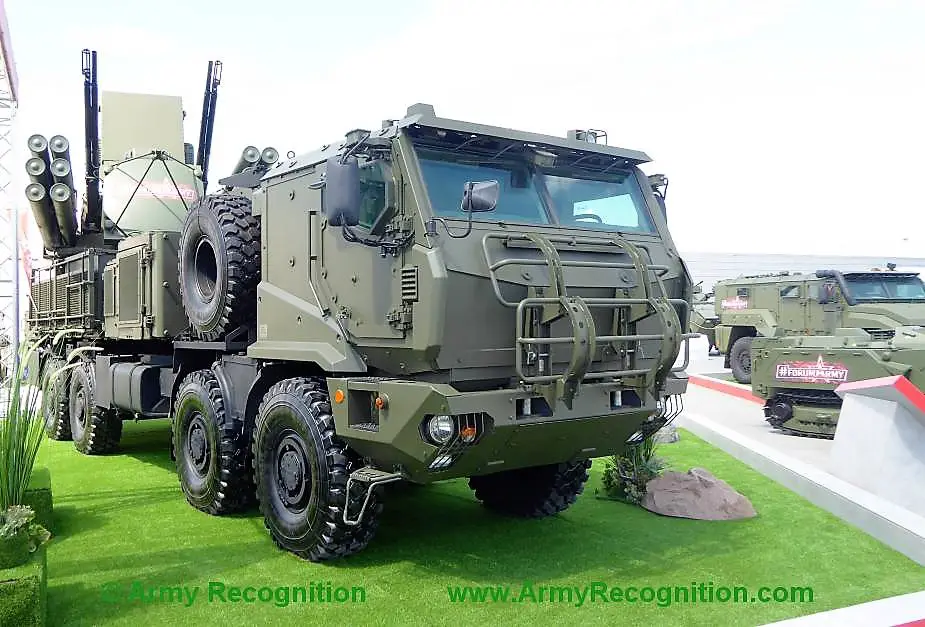Russian army upgrades counter-UAV systems
It is difficult to imagine a modern army without unmanned aerial vehicles (UAV). The engagement tactic is constantly updated. Swarms of drones are used to attack one major target. They can comprise hundreds of small and cheap drones. Hence, the upgraded Pantsir-S1M air defense system can fight all types of drones. The latest Russian drone designs will fight small, but very dangerous targets.
Follow Army Recognition on Google News at this link

Pantsir-SM unveiled at Army-2019 defense forum near Kubinka (Picture source: Army Recognition )
Counter-UAV
The latest armed conflicts in Syria and Nagorno-Karabakh showed that strike drones are very effective. Small and super small UAV are actively engaged by the military and terrorists. Military designers are creating counter-UAV systems. The Shipunov Design Bureau has produced the latest one.
Several years ago, the bureau created the Pantsir-S1 air defense system, which currently protects the Russian Humaymim airbase in Syria, fights US drones in Libya, and ensures the security of international forums and sports events. Pantsir Chief Designer Valery Slugin said the ability to fight drones was integrated into the weapon from the very beginning. However, the UAVs were big in the mid-90s. They decreased in size and altitude with time and most radars could hardly detect them. It was difficult to detect, track and provide guidance at such targets. Pantsir radar had to be upgraded to intercept small drones. It can now see to a distance of 75 km, detect and track 40 targets at a time: “We have adapted radars to detect and track small targets. Our new missile does not have a homing warhead, only the destructive element. If the radar of the combat vehicle sees the target, we can guarantee that the missile will explode in the trajectory of the drone and fragmentation will destroy it,” Slugin told TASS.
The Russian defense industry produces soft-kill (electronic warfare) and hard-kill (physical destruction) weapons against drones. The new Pantsir-S1M can operate in both regimes. Its latest electronic warfare can jam the navigation of drones at a distance of 15-18 kilometers.
Echeloned defense
Russia is designing echeloned electronic defense against small drones. It reliably protects territories and facilities against solo and swarms of drones.
The Repellent system of Oboronitelnye Sistemy (Defense Systems) can fully protect territories against UAV. It uses radio signals to identify a drone and determine the coordinates of the ground control. Repellent initially identifies the type of drone and direction and then jams communication channels with the operator located 30 km away.
Repellent operates in any time of the year, climate and weather, including dust, rain and strong wind. It has optical-electronic drone identification system comprising a video camera of the visible spectrum and a heat imager. Repellent uses them to provide guidance to electronic warfare and air defense.
Serp
Mobility and covertness are necessary to fight drones. Rostec displayed Zashchita counter-UAV mobile system at Army-2021 forum. It is carried in several cases and is deployed in 30 minutes.
The system can see flying craft and determine their type in 360 degrees at a distance of 12 km. It uses Serp system to locate a drone control panel and disrupt communications with it. The system totally jams frequencies in the 400-6200 MHz band usually used for drone control.
Besides jamming control channels, Zashchita also jams navigational signals of global satellite systems.
© Copyright 2021 TASS / Army Recognition Group SPRL. All rights reserved. This material may not be published, broadcast, rewritten or redistributed.


























